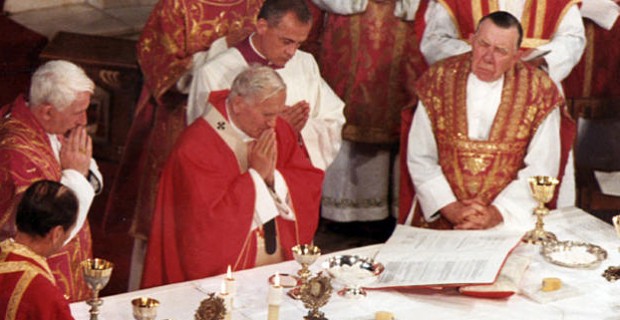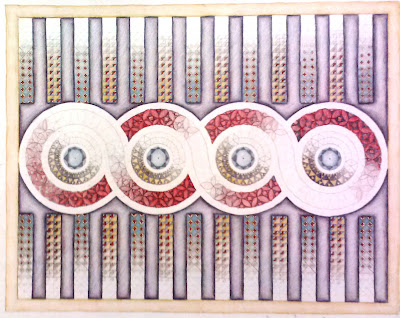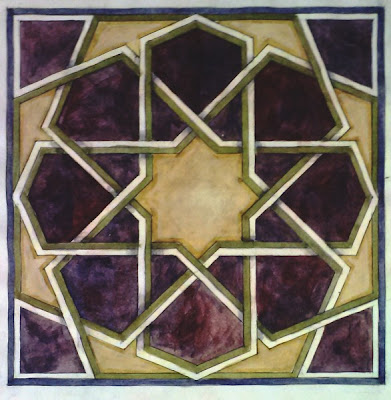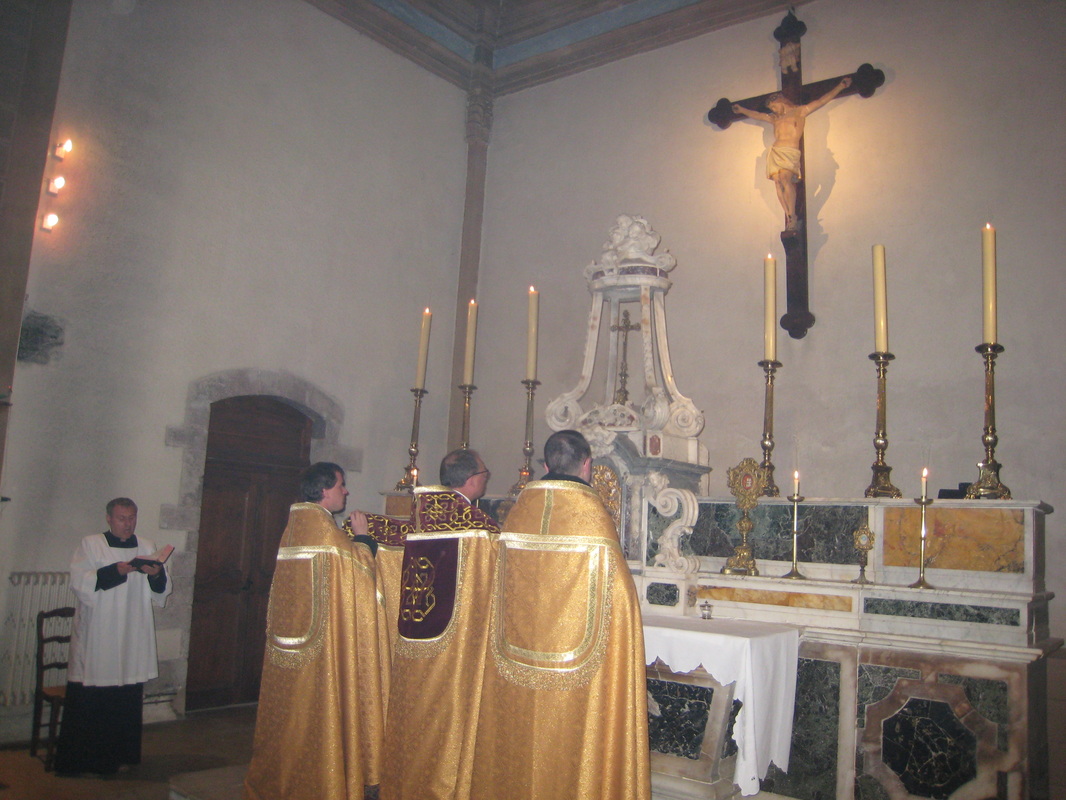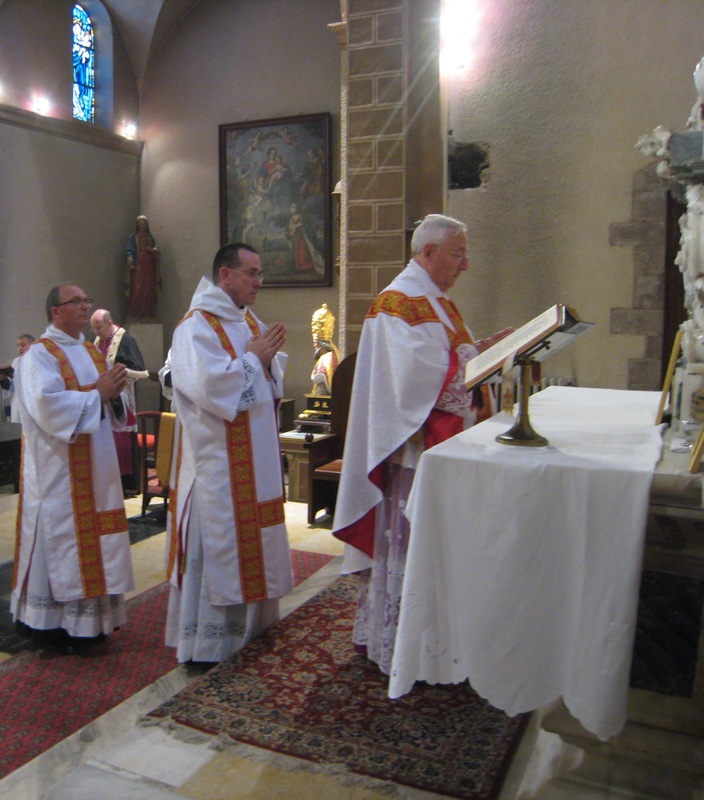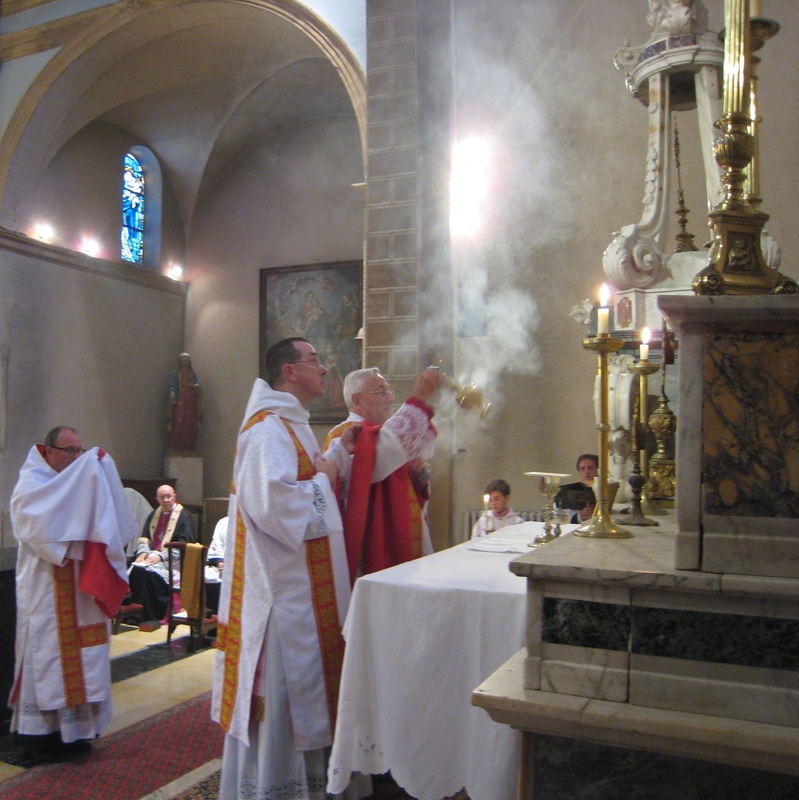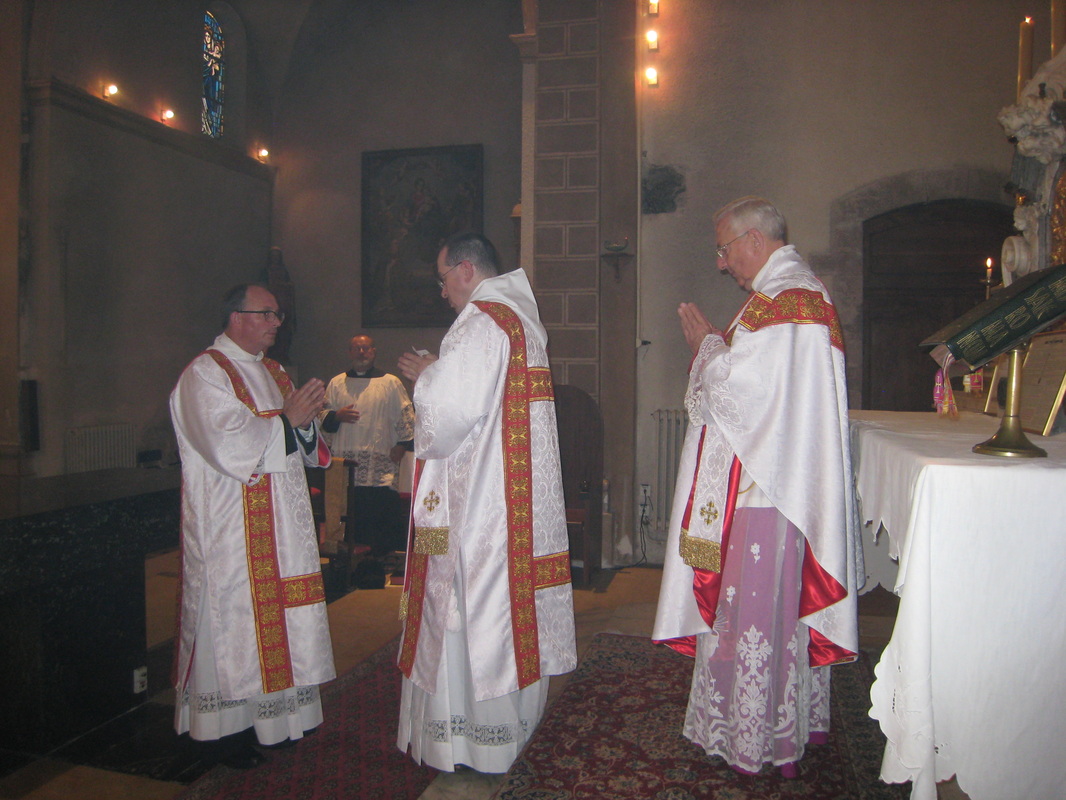I will be the first to admit, to the dismay of many people of a more traditional leaning, the 1962 missal was not perfect. For example, the calendar needed to be updated, such as adding new saints. Another downfall of the EF is it's natural lean towards the spoken Mass, to my dismay. I fully understand the structure of the private low Mass, and the public sung Mass, but obviously, that was a much different time.
While it is good for all of the appropriate parts to be sung whenever possible, and "hard coding" that into the rite can be helpful (as we find in the '62 missal), there are also many occasions when nothing was sung, even the dialogs and ordinary (which some congregations would be more than comfortable with), because the propers could not be sung.
This reminds me of the eastern churches: many of them know nothing of a spoken Mass.
There is no reason why the dialogs should not be sung, at the very least. In a "low Mass" culture, we need to do what we can to reclaim our language of prayer: sung prayer.
Nonetheless, I an a passionate advocate for both the propers, and the sung liturgy whenever possible. I may write about this more in the future.
But particularly for those working in or praying the Ordinary Form, this is very possible. Pastors: begin singing the dialogs. Sing the collects. Sing the preface. Sing the prayers after the Our Father (after singing the Our Father, of course). Even recto tono can be used, if need be, though the music for them is not at all difficult. Just sing the prayers, and in doing so, elevate the prayers themselves. It makes a difference.
The following article makes the important connection that it is not only important that the propers (scripture) be used in the Mass, but it is important for it to be sung.
The article below has been graciously reposted in full from Views from the Choir Loft, by Aristotle Esguerra.
-----------------------------------------------------------
-----------------------------------------------------------
For a long while I’ve been
ruminating on the nature of the Liturgy, Scripture as found in the Mass
Propers, the Golden Calf narrative (thanks to Ratzinger’s Spirit of the
Liturgy), Good Friday tradition, and episcopal authority. Here are some
semi-organized thoughts on the matter.
Nature of the Sacred
Liturgy:
The Sacred Liturgy is
Christ’s eternal offering to the Father, in which we participate “through him, with him, and in him in
the unity of the Holy Spirit”: Christ makes the perfect sacrifice, and we
configure ourselves to it through submission to his liturgical action as laid
down by the Church—“without me you can do nothing” (John 15:5).
The Latin Rite,
Scripture and its Nature, and the Mass Propers:
On paper, the Latin
Rite Mass may well be the most explicitly Scriptural rite in all of
Christendom.Scripture is not
limited to the readings and psalms of the Liturgy of the Word. The Order of
Mass itself is awash in
Scripture. Moreover, the proper texts of the Mass—most neglected during
theProcessions of the Mass—come from the psalms, Old and New
Testament canticles, and Gospel/Epistle passages. (Non-Scriptural proper texts
are insignificant in number compared to the vast array of Scripture intended to
be sung—and even these non-Scriptural texts are in most cases to be paired with
verses from Scripture when possible.)
What does Jesus sing? Psalms were sung perfectly by Christ to
the Heavenly Father during his earthly life as the perfect Jew, making the
perfect sacrifice to the Father by following the Law perfectly in every way (Matthew 5:17).
As Christ is the Eternal Word (John 1:1), the words he utters are a touchstone to eternity;
they echo forever. Therefore, when the Propers are sung, Christ sings—I tell my
choirs that singing Scripture allows for a “communion” of sorts even before
they receive his Body, Blood, Soul and Divinity; “they do not sing, but Christ
sings through them” (cf. Galatians 2:20).
Liturgical Norms: GIRM (I use the US edition since this is where I live),
via the examples given in the ritual books cited, calls for Scripture to be
sung at the three processions of the Mass (GIRM 48, 74, 87):
- Option 1 prescribes the Proper (Missal or Roman Gradual) — scriptural
- Option 2 prescribes the Proper (Simple Gradual) — scriptural
- Option 3 prescribes selections from other collections of Psalms and antiphons, provided they are approved by the bishops — scriptural
Golden Calf, Good
Friday, and neglect/abuse of episcopal authority in the liturgy:
The Golden Calf and GIRM Option
4: Aaron the high priest
fashioned the calf from the contributions of the people, at the behest of the
people (Exodus 32:1–6).
God did not approve this; in fact he hated it to the point of eradicating his
chosen people (Exodus 32:7–10);
but the people may well have led themselves to believe that Aaron’s command was
divine (neglect of priestly authority, i.e., “Aaron allowed us to do it, so it
must be right”). Ratzinger observes that the people may have believed they were
truly worshiping God, though of course they were not (Spirit of the Liturgy 22–23).
When Moses confronts Aaron about the abuse he committed, Aaron heaps more sin
upon his misdeed by being disingenous (“I cast it into the fire, and this calf
came out”, cf. Exodus 32:24). The rest of Exodus 32 outlines the grave
consequences of this error.
In the United States,
Option 4 allows “another suitable liturgical song” approved by the bishops.
Despite many suitable liturgical songs from the treasury of the Church’s
liturgy (hymns of the Liturgy of the Hours, Sequences, Litanies, Responsories,
etc.), many songbooks intended for use in the liturgy and “printed with
ecclesiastical approval” include texts of questionable merit. The people in
this instance believe they are worshipping God in spirit and truth, but is that
the case? People are developing an attachment to these words, but are the words
of Christ?
Good Friday and Option
4: Barabbas means
“Son of the father”; tradition tells us that his first name also was Jesus
(i.e., “God saves”). The mob, incited by the high priests and scribes, chose
Barabbas—a savior of their own imagining—to be released instead of the true
Savior, the Son of the Eternal Father. With the new Mass, Option 4 allows the
Word of God (Options 1–3) to be cast aside for words of people’s own choosing.
In doing so, do we not unwittingly repeat Good Friday, in that we choose the
words of man over the Word of God living and effective (Hebrews 4:12)?
At least with the
Responsorial Psalm there is clearly delineated demand for Scripture: “Nor is it lawful to replace the
readings and Responsorial Psalm, which contain the Word of God, with other,
non-biblical texts” (GIRM 57). But the Church also demands Scripture be
retained for the processional chants of the Mass (Sacrosanctum Concilium 116).
Episcopal Authority: Until the bishops speak and act in one
voice on the matter, calling for the restoration of the Word of God to God’s
own liturgy, individual bishops, priests, and laity sympathetic to the sung
Mass, propers in their Gregorian/polyphonic genres, etc., are stuck with “more
Catholic than the Pope” accusations, etc. The biological solution works on
everyone, and for those unsympathetic to these genres, they too can play a
“waiting game”. How many people consider Benedict XVI’s pontificate a blip on
the radar?
GIRM Option 3, a
“third way” back to Scriptural liturgy regardless of musical style
Sidestepping the style
wars: Dr. Mahrt and others have made very persuasive arguments
for music stylistically proper to liturgy. Despite the many advances that have
been made in certain parishes, other parishes seem to be stuck in the style
wars, with no end in sight. Still other parishes retain music repertoires that
are heavily or exclusively influenced by popular secular styles. In many of
these cases more headway might be made when energy is focused on the textual justification
for propers/singing of Psalms at the processions. Msgr. Wadsworth of ICEL has
proposed the unity of the Roman liturgy is in its texts (cf. 2010 CMAA Colloquium keynote).
Option 3 as a textual
upgrade from Option 4 as popularly applied: An Option 3 solution—“a chant from another collection of
Psalms and antiphons, approved by the Conference of Bishops or the Diocesan
Bishop, including Psalms arranged in responsorial or metrical forms“—regardless
of the musical style, would constitute a vast improvement over the Option 4
fare that passes for worship. Since selections from Option 3 have a greater
guarantee of being Scriptural, they are more likely to allow access to singing
with Christ to the Father rather than singing amongst ourselves.
Many Option 3
selections are well-known in some way: Many settings of Responsorial Psalms and their paraphrases
are well-established staples of existing ensembles’ and congregations’
repertoires; therefore, using these at the Entrance, Offertory, and Communion
would not constitute a wholesale discarding of repertoire, which in some cases
has taken much effort to master. Other selections that can fall under Option 3,
e.g., Hymn Tune
Introits, are easily adapted to hymn tunes that exist in parish
repertoire.
Textual upgrade, not
stylistic downgrade: Since Gregorian
chant is the sung prayer proper to the Roman Rite, Masses that incorporate the
propers in this idiom should not be eliminated, nor should efforts to learn
this repertoire be abandoned. However, in those environments where this is not
feasible in any way, moving from Option 4 to Option 3 would foster throughout
the Mystical Body of Christ a greater unity with him who makes his eternal song
to the Father.
May be the only way
forward in many places: Singing
Scripture that is clearly identifiable as such would go a long way towards
fostering true unity in the Church’s liturgy—a unity centered on and in Jesus
Christ, who alone makes the true sacrifice to our heavenly Father. In places
that frown upon the Church’s traditional ritual music, moving from
non-Scriptural lyrics to Scriptural lyrics may be the only feasible transition
at this time.
